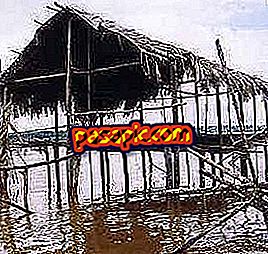How to distinguish between open lists and closed lists

Based on the case of Spain, we will explain what the open and closed lists consist of . In principle, open lists are more attractive to voters, since they have more capacity to decide on exactly who will form the government, since the citizen presents his option without having the limit established by the party in the closed lists. Bearing in mind that democracy seeks the greatest participation of the electorate, it seems that the tendency will be to end up with the lists configured by the parties.
one
The Spanish electoral system is governed by a system of closed lists that is applied in all elections: general, regional, municipal, the European Parliament, etc. Citizens vote for lists of candidates that are drawn up by different political groups and on which they can not influence, since they are blocked.
two
When citizens vote for lists of politicians instead of individual candidates, their votes are distributed proportionally. The Spanish electoral system follows a procedure known as the D'hont Law, in which the seats are distributed among the groups that have obtained more than 5% of the votes of each constituency. You start with the head of the list of each formation, then the number two, continue with the number three, and so on.
3
The exception to this system is the municipal elections in localities with less than 250 inhabitants . In these cases, each formation presents a list composed of 5 candidates and the voters choose them individually, being able to vote up to a maximum of 4 councilors. In the municipalities with less than 101 inhabitants, the procedure followed is the same, except that the lists that can be presented by the parties can only be made up of 3 candidates. The voters, meanwhile, may elect two councilors at most.
4
The closed lists are drawn up by the political parties, which choose the people they consider most suitable for each candidacy. If one of its deputies or councilors leaves the formation to create a new one or to constitute a coalition, the party loses power, since it loses a seat. This is what is known as transfuguismo . In 1998 PP and PSOE signed an anti-refugee pact that they expanded in 2003. In it they undertook not to support the leaks that occurred in the ranks of the opposite. But they have continued giving cases of this type. In 2007, the socialist militant Rosa Díez left the PSOE to form a new party: Unión Progreso y Democracia (UPyD). In April 2011, the leader of the PP in Benidorm, Gema Amor, also left her party to form a new one: Centro Democrático Liberal.
5
There are many democratic nations that operate with an open list system. Voters do not vote for groups of voters, but for individual candidates who are then in charge of setting up a government . Some of the most famous are Finland, Switzerland, Italy, Brazil or the United States.
Tips- In Spain it has often been insisted on changing the law to allow open lists, so that citizens will gain interest in politics, but the process has been stalled.


